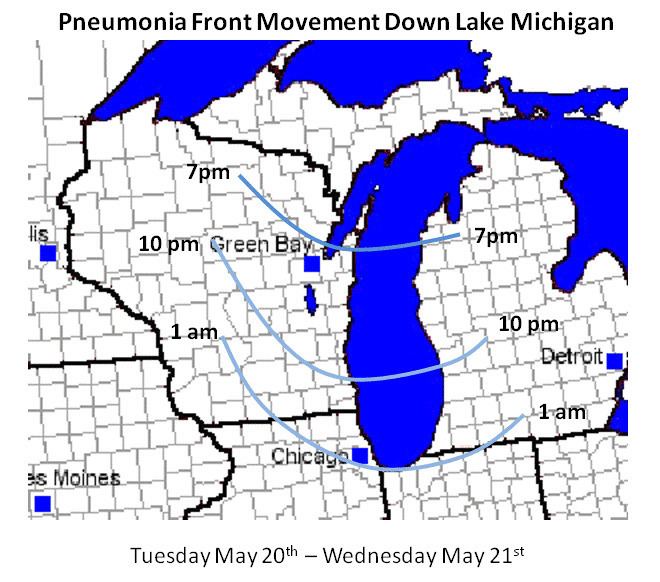 | ||
Pneumonia front 9 30 2014
The term Pneumonia front, first coined by Milwaukee Weather Bureau Office in the 1960s, is used to describe a rare meteorological phenomenon observed on the western Lake Michigan, USA, shoreline during the warm season. These fronts are defined as lake-modified synoptic scale cold fronts that result in one-hour temperature drops of 16 °F (8.9 °C) or greater.
Contents
They do not necessarily have to be synoptic, or large scale, cold fronts. Very often in the Spring to early summer the temperature difference between the cold lake waters and the warmer air over land can be as much as 35-40 °F. Under weak prevailing winds, a density current can often develop in the form of a lake breeze that moves from that water to the adjacent shoreline and several miles inland. This "lake-breeze cold front" can drop temperature in places like Chicago, Milwaukee and Green Bay significantly as they cross the area. There has been many a Spring day at Wrigley Field that surprises people who may have travelled from an inland location toward the shore to take in an afternoon game, only to feel the effects of the "pneumonia front" as that cold blast of air comes through.
The following are sixteen occurrences of a lake modified synoptic scale cold front or "pneumonia front".
